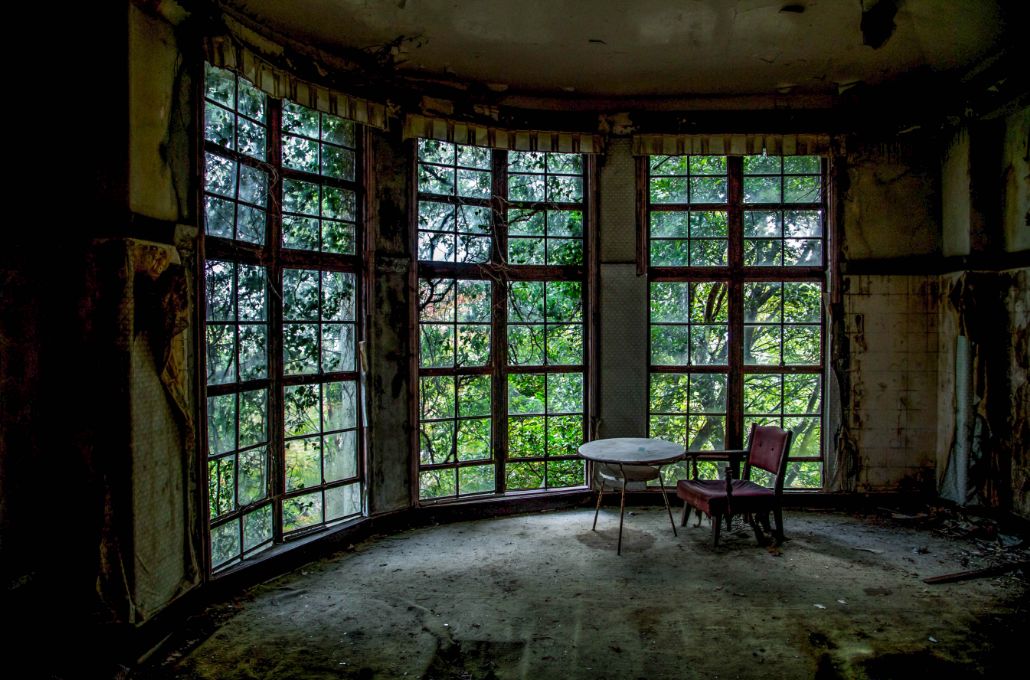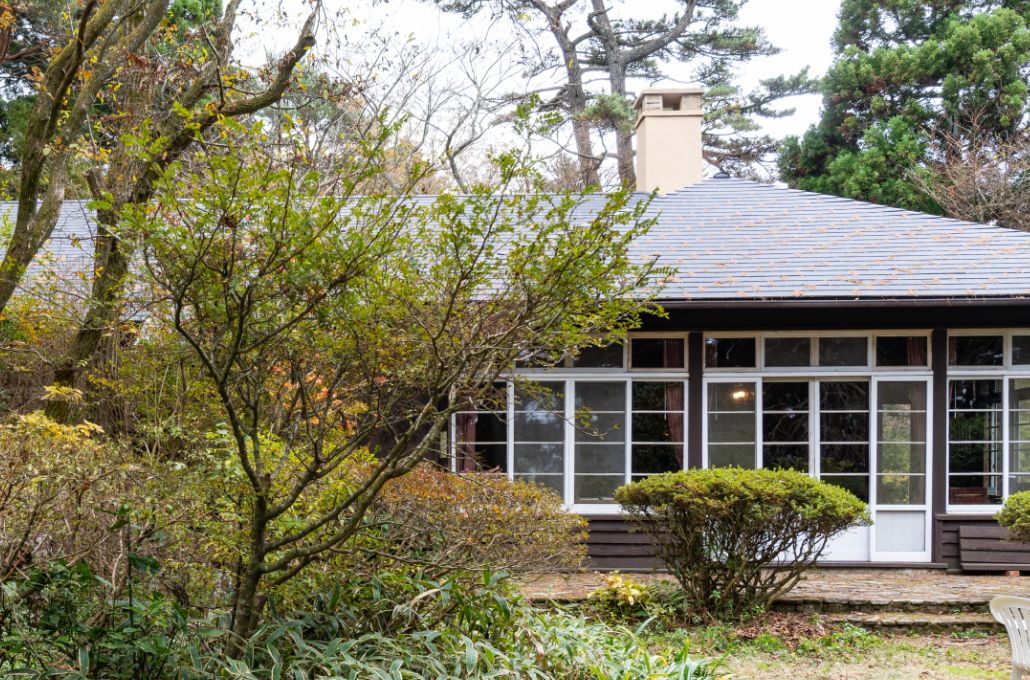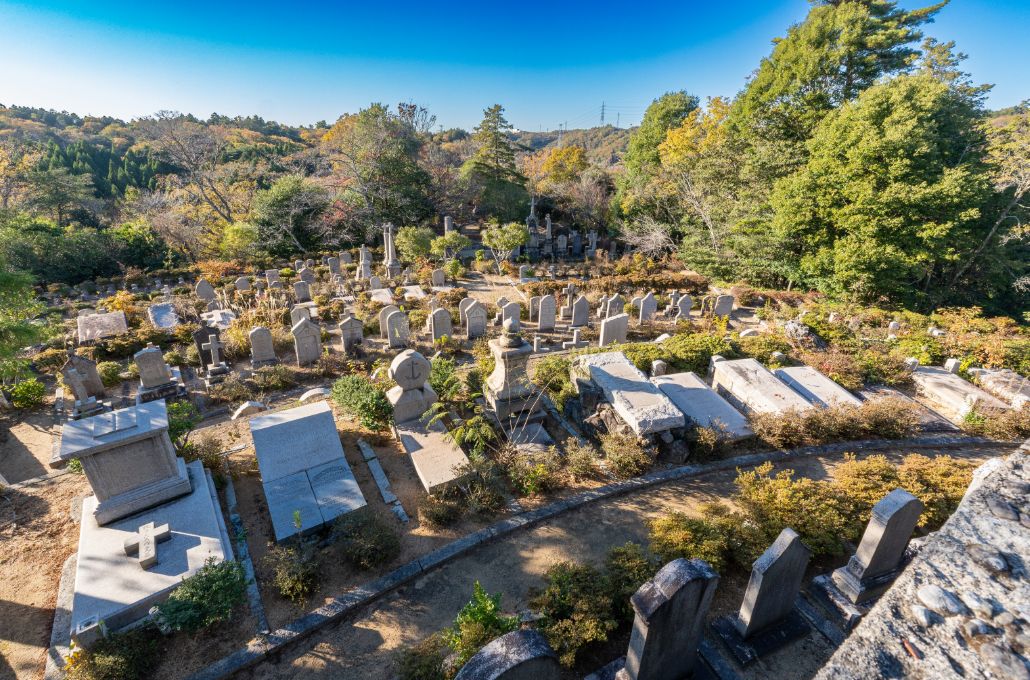
Nestled in the southern part of Hyogo Prefecture, the Rokko Mountain Range stretches east to west, centered around the 931-meter-high Mt. Rokko. With its proximity to the urban centers of Kobe and Osaka, its natural beauty, and its hot springs, this region has flourished as a major tourist destination.
The higher reaches of the mountains feature relatively flat terrain and are home to golf courses, hotels, resorts, and various tourist facilities. The area has a long, rich history, as evidenced by it being mentioned in the Nihon Shoki, an ancient chronicle of Japan’s early history.
Starting around the turn of 19th century, rampant deforestation and quarrying left the mountainous terrain in a desolate state. It wasn’t until the Meiji Restoration in the latter half of the 19th century and subsequent land development efforts that reforestation began in earnest. Today, the lush greenery of these mountains attracts people looking for an outdoor escape.
The region also has deep international connections, with a foreign settlement existing at the base of the mountain range near Kobe Port until 1899. As a result, Western culture has had a significant influence here, leaving behind historic buildings that incorporate Western architectural techniques.

The former Maya Kanko Hotel is a historic building in the Nada Ward of Kobe on the southern slope of Mt. Maya. Located centrally within the Rokko Mountains, it is enveloped by forested hillsides and lacks direct road access. Owing to its historical significance, it evolved into a summer retreat for Kobe’s Western residents and served as a mountain-top recreational facility both before and after World War II.
Completed in 1930, the building was designed by the architect Otsukichi Imakita. Over the years, it changed ownership several times and is now owned by Japan Service Corporation. This two-story structure (with two underground floors) was built with reinforced concrete and features a unique flat roof.
Originally designed for a variety of purposes, including use as a public hall and bathhouse, the building operated as a hotel after WWII. It later underwent multiple changes and faced repeated challenges before being closed. The building’s most notable feature is its adaptation to the sloping terrain of Mt. Maya, resulting in differing layouts for each floor to conform with the site’s topography. The exterior is very unique, with influences from the German Expressionist and Art Deco architectural styles.
The Maya Kanko Hotel Preservation Society raised funds through crowdfunding to preserve the building and provide safe sightseeing opportunities. These funds were used to install a security system at the hotel and undertake necessary maintenance work to combat deterioration. Today, this building continues to contribute to Japan’s historical landscape, and the preservation efforts persist as an integral part of its ongoing legacy.

Nestled amidst the lush foliage near the summit of Mt. Rokko stands a humble, single-story wooden mountain lodge. This simple abode, designed by the renowned architect W.M. Vories, was constructed in 1934 as the summer retreat of Yoshikazu Kodera, a professor at Kwansei Gakuin University. Vories was active around the turn of the 20th century and also designed Kobe College (an Important Cultural Property) and Kwansei Gakuin.
This mountain retreat is a testament to Vories’s architectural philosophy of prioritizing the comfort and well-being of a building’s occupants. With its spacious living area adorned with large windows to enjoy the surrounding greenery, a cozy fireplace for the family to gather around, and ample storage space, the lodge embodies Vories’s commitment to harmonious living spaces.
The lodge remains in remarkably well-preserved condition, both in terms of architecture and furnishings. It provides a unique opportunity to experience the cultural ambiance of the early 20th century in the Rokko Mountains, making it a historical architectural treasure with significant cultural value.
Managed by the Amenity 2000 Association for preservation and public access, this lodge holds the distinction of being a National Tangible Cultural Property of Japan, a Heritage of Industrial Modernization site, and one of the 100 Selected Modern Residences in Hyogo.

In 1868, after rapid development following its opening as a port, the population of Kobe surged. However, amidst this rapid growth, public infrastructure lagged behind, leading to deteriorating public water quality and necessitating a clean source of drinking water.
To address this issue, Hyogo Prefecture embarked on a project that focused on tree planting and erosion control in the Rokko Mountain Range. Thanks to their painstaking efforts, lush greenery once again covered the mountains and high-quality natural spring water returned.
The site where this greenification project began has now been transformed into Futatabi Park. Within the park lies the Kobe Municipal Foreign Cemetery, where 2,900 foreign individuals who immigrated to Kobe and contributed to the city’s growth rest in eternal peace.


令和5年度 文化資源活用事業費補助金(文化財多言語解説整備事業)